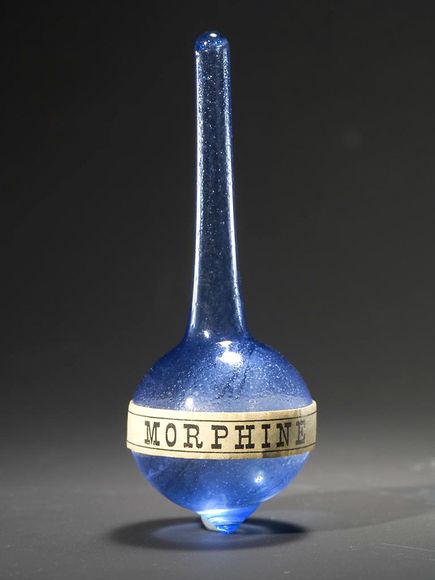 Jennifer Margulis, 40, of Ashland, Ore., delivered daughter Leone Francesca at home Nov. 4 without medical help. More women are opting for unattended births.
Jennifer Margulis, 40, of Ashland, Ore., delivered daughter Leone Francesca at home Nov. 4 without medical help. More women are opting for unattended births.
More women choose do-it-yourself births
A growing number are having babies at home without medical help
Jennifer Margulis thinks birth should be a private party — no doctors or midwives invited. So when her daughter Leone Francesca was born at home last month, only Margulis and her husband, James, were in attendance.
“My husband and I were the only ones there when she was conceived,” says the 40-year-old writer from Ashland, Ore. “I thought we should be the only ones there when she was born.”
Margulis is part of a very small but growing number of women who are choosing to deliver their babies at home without the presence of health professionals. Some choose to have a husband or another family member help, while others opt to deliver their babies completely on their own.
The number of home births unattended by either a doctor or a midwife jumped by nearly 10 percent between 2004 and 2006, climbing from 7,607 unassisted births to 8,347 births, according to most recent figures from the National Center for Health Statistics. About 60 percent of the nearly 25,000 home births logged in 2006 were attended by midwives, a figure that experts expect will also rise.
While do-it-yourself deliveries are still uncommon, many doctors and midwives consider them dangerous. Risks can range from hemorrhage in the mother to problems with the baby’s oxygen supply during delivery.
“Most births are not complicated but when something goes wrong, everything happens very quickly and things can go downhill very fast,” says Donna Strobino, a professor and deputy chair in the department of maternal and child health at the Johns Hopkins Bloomberg School of Public Health in Baltimore.
“If you look at data from developing countries where unattended births are more common, you see a higher rate of infant and maternal mortality with unattended births than with hospital births.”
Even among healthy women with no clear risk factors, life-threatening complications can arise suddenly, says Dr. Hyagriv Simhan, an associate professor of obstetrics and gynecology and chief of maternal-fetal medicine at the Magee-Womens Hospital of the University of Pittsburgh Medical Center. “There are lots of women who experience unpredictable bad events,” Simhan says.
Shauna Schoenborn, a stay-at-home mom from Imperial, Mo., and other advocates of unassisted birth aren’t swayed by doctors’ warnings. To them, pregnancy and delivery are natural processes that the medical establishment has turned into disease that must be managed.
After giving birth to her first baby in the hospital, Schoenborn, 31, chose to have her next four children at home — by herself. Although her husband was in the house during the births, he didn’t help with the deliveries.
“My hospital births were very managed,” says Schoenborn. “I wanted privacy and to be free of internal exams. I wanted to give birth in an upright position and they want you to lie down. I feel birth is an instinctive process and in the hospital they treat women like they’re broken and birth like an illness.”
‘I know my body’
Schoenborn also chose not to have prenatal care from a medical professional. That meant no internal exams and no ultrasounds to check for twins and fetal development. “I would know if I was carrying twins,” Schoenborn says. “I know my body.”
For Margulis, the biggest problem in the hospital — and even at home with a midwife — was interference with “normal” labor. When a pregnant woman enters the hospital, Margulis says, she’s signing on for a host of unnecessary interventions, including multiple internal exams, a greatly increased likelihood of receiving the drug oxytocin to speed delivery and also of a Caesarean section.
Margulis’ first baby was born in a hospital and the next two were at home with a midwife. Margulis wasn’t happy with either experience and decided she wanted more control over the process.
After researching the do-it-yourself option, she felt assured the birth process is “safer than taking a shower.”
Margulis cited a recent Canadian study that found giving birth at home with a midwife was about as safe for babies and moms as in a hospital, with the rate of newborn deaths about two per 1,000 for planned home births. The rate of C-sections was a few percentage points higher in hospitals.
However, the women in the studies were very healthy, had no risk factors, and had small-sized babies, says Dr. Harish M. Sehdev, an assistant professor of clinical obstetrics and gynecology and director of labor and delivery at Pennsylvania Hospital in Philadelphia. Hospitals generally have much higher C-section rates because they treat a variety of new moms, including those who are overweight, have big babies and have lots of risk factors like diabetes and high blood pressure.
In addition, one in 20 women who had chosen to give birth at home ended up delivering in the hospital. “And those were the low-risk women,” Sehdev adds.
More important, says midwife Pamela Kane, Margulis is “comparing apples and oranges.” The studies cited by Margulis are looking at home births with midwives present, not unattended births, which are more risky because you don’t have a trained professional nearby who can spot the early warning signs of a serious problem, says Kane, a certified nurse midwife at Pennsylvania Hospital.
And while women like Margulis and Schoenborn may not like being put on a birthing schedule, experts say there are reasons doctors choose to intervene with oxytocin or a C-section if the labor isn’t progressing fast enough. Among them is the risk of damage to the musculature of the pelvic floor if women strain too long, says Sehdev.
When those muscles are damaged, it weakens the moorings that hold the uterus, the bladder and the bowels in place. The impact of that may not be seen till women hit their 50s and 60s, when the organs can unexpectedly drop down into the vaginal canal.
The choices women make might change if they saw the catastrophes that nobody likes to talk about, says Sehdev. “I’ve known women who lost their babies because the baby got stuck and they couldn’t get to the hospital fast enough,” he explains.
Those realities have affected the way Augustine Colebrook looks at unattended births. Colebrook had three children on her own before going back to school to become a midwife so that she could help with births herself.
“I struggle with myself wondering if I would have another kid unattended, after being a midwife for almost 10 years,” says the 33-year-old from Ashland, Ore., who consulted with Margulis during pregnancy. “I think I probably would — it was a life-changing experience. But I’m not sure.”
Margulis, however, says she finally experienced the kind of birth she wanted.
“It was absolutely incredible, a totally empowering experience,” she said. “When you give birth by yourself, you realize how powerful and strong your body is.”
Linda Carroll is a health and science writer living in New Jersey. Her work has appeared in The New York Times, Newsday, Health magazine and SmartMoney.
asian women,beautiful women,gallery women,local women,seeking women,the women,woman,women,women clothing,women for,women girls,women photos,women pic,women pics,women pictures,women size,womens,More women,choose,do-it-yourself births,do-it-yourself,births





 Jennifer Margulis, 40, of Ashland, Ore., delivered daughter Leone Francesca at home Nov. 4 without medical help. More women are opting for unattended births.
Jennifer Margulis, 40, of Ashland, Ore., delivered daughter Leone Francesca at home Nov. 4 without medical help. More women are opting for unattended births.